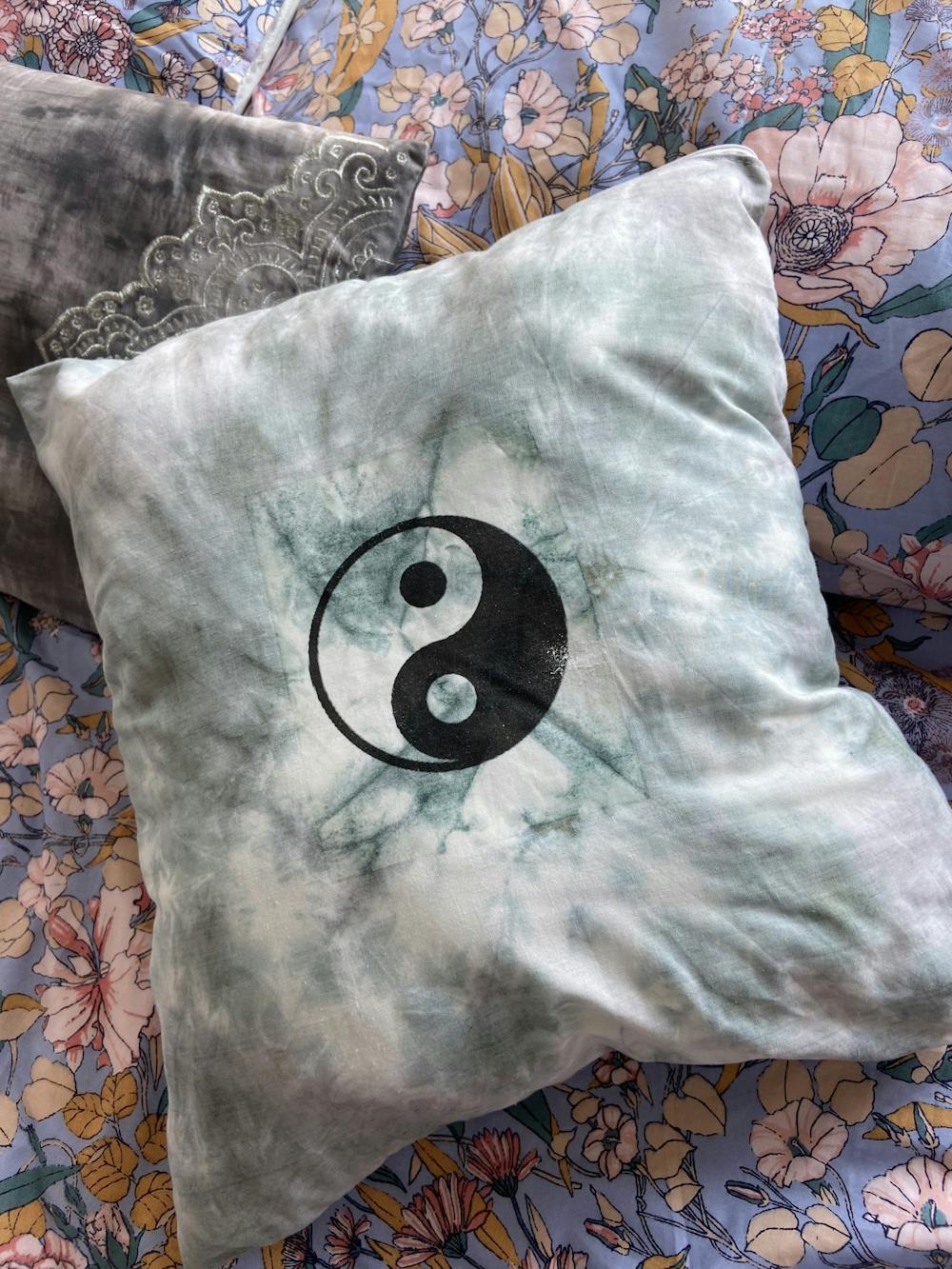As the new semester begins and students start back-to-school shopping for Zoom-appropriate tops and comfortable, pajama-like bottoms, many are taking a closer look at what clothing they are buying and the businesses they are buying from.
“Sustainable” has become a popular term within the past few years as climate change remains an ever-pressing issue. Sustainable fashion takes into account the entire lifespan of the garment from how it is made, how it gets to shoppers and where it is eventually discarded. Sustainable brands find it important to understand how each product and purchase affects the environment before making it.
To some, however, sustainability is more than just a term; it is a lifestyle. Since the coronavirus pandemic has closed many stores and has kept shoppers at home, sustainable living has become easier for many, as they have become increasingly familiar with the clothes in their closet.
Caroline Grossman, an AU junior studying environmental sustainability in the School of International Service, used much of her time in quarantine to learn more about sustainable practices through upcycling, the process of taking something considered waste and giving it a new purpose.
“I love upcycling because anyone can do it,” Grossman said, adding that, although some people try to restrict the process with specific rules, sustainability is for everyone.
Do-it-yourself trends on platforms such as Pinterest, YouTube and, most recently, TikTok, have always been popular for users, viewers and subscribers. Recently, a lot of DIY creators have emphasized the importance of using what is on hand to eliminate waste and prevent shoppers from participating in “fast fashion.”
“The trends are always changing, so I feel like a lot of people think they need to cater to that,” Grossman said. “I love Pinterest because they offer so many ways to use what you have to match what is trending.”
Natalie Senft and Rachel Lee, the presidents of AU’s Fashion Society, also known as Revolution, believe that living sustainably is an investment to oneself, and they try to reflect that belief in their organization.
“The fashion industry is so much more than shopping and fashion shows,” Lee said. “We really wanted to make our club a place where we can discuss important issues like [sustainability] and learn how to prioritize it.”
The sustainability movement in the fashion industry rose along with fast fashion in order to subvert it, Lee explained.
“A $2 shirt from SHEIN may be a good deal,” Lee said. “But prices like that get a lot of people talking about how it’s possible to make something for that cheap.”
Although consumers purchase 400 percent more clothing today than their counterparts 20 years ago, prices have not significantly changed because the burden has fallen on workers in countries overseas. Keeping these prices down means subsidizing costs in the form of low labor wages, unsafe working conditions, and places a strain on the environment, all of which the average consumer is removed from during the buying process.
Senft echoed similar sentiments, stating that the fashion industry is driven by money, and “companies that have the buying power will dictate how sustainability has an impact on their brand.”
Fashion is seen as a great and creative form of self-expression, but attempting to express oneself through clothing sustainably can become expensive and inaccessible for many. Stores dedicated to sustainability such as Reformation, which recently came under fire for its lack of inclusivity, are not in the average student’s budget. With fashion trends constantly changing, the pressure to fit in and shop fast fashion can be difficult to resist.
“While sustainability is a very important issue and everyone should strive to become more sustainable with their clothing choices, it’s an elitist issue because not everyone can afford to be sustainable,” Lee said. “There’s only so much we can do as consumers. We can start the conversation, but it’s up to the industry itself.”
Although it can be hard to live sustainably, it is not impossible. It is important to understand what is needed versus what is wanted and what can be already used from home, Senft said.
Grossman, for example, made it a point this summer to tie-dye several T-shirts that she did not wear anymore.
“I love the tie-dye trend, so recently, instead of buying an already dyed piece or buying white clothes to dye, I’ve been using what I already own,” Grossman said. “I think it ends up looking cooler that way too.”
The textiles available in stores use a lot of water in the production process, Grossman said, which is detrimental for climates and communities. She later added that she believes upcycling clothes is the best way to refresh your closet without harming the planet.
People can determine if a company is worth buying from or how to get the perfectly dyed swirl pattern on that old sweatshirt through resources on the internet. Some Instagram accounts that Grossman calls on for inspiration on her next upcycling adventure and tips for a greener lifestyle include: @queerbrownvegan, @brightly.eco, @intersectionalenvironmentalist, @sustainable.collective and @thezerowasteguide.
Sustainable consumption means taking responsibility for the choices made at the store. Sustainable fashion includes buying less, investing in staple clothing items and buying pieces that will last longer. At the end of the day, every little action can add up to a greater impact.





